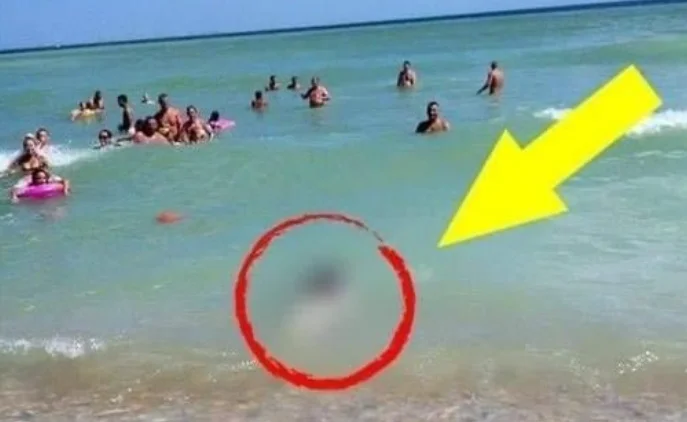
A profound sense of astonishment gripped onlookers as an extraordinary sight emerged from the depths of the sea along the Romanian coast. The tranquil waters revealed a wounded dolphin, its plight capturing the attention of unsuspecting tourists.
Efforts were made to rescue the distressed marine mammal, but regrettably, its fate was sealed. Experts identified the creature as a member of the Delphinus Delphis species, a species known to inhabit the Black Sea.
Upon closer examination, the dolphin displayed multiple wounds on its body, likely inflicted by the ensnaring nets of fishermen. The Black Sea is home to three distinct species of marine mammals: the Common dolphin (Delphinus delphis ponticus), the Bottlenose dolphin (Tursiops truncatus ponticus), and the Harbor porpoise (Phocoena phocoena relicta).
Diverging in morpho-anatomical features and primary food sources, these species exhibit unique characteristics. The Bottlenose dolphin and Harbor porpoise primarily feed on fish and benthic organisms, while the Common dolphin’s diet encompasses fish and other organisms found within the water column.
Each species displays a preference for specific habitats, with the first two favoring coastal areas and the Common dolphin being commonly encountered in offshore zones. The Common dolphin is characterized by a bluish-gray to brown color on its dorsal side, featuring a distinct V-shaped lateral boundary that is remarkably light. A pigmented band, varying in darkness, connects the lower jaw to the insertion of the pectoral fins. The dorsal, pectoral, and caudal fins range from black to gray-brown.
Newborns measure around 0.80-0.95 m, with adults in the Black Sea not exceeding 2 m (males – 177 cm, females – 159 cm). Highly sensitive to chemical and acoustic pollution, they exhibit social behaviors, forming groups of 10-15 individuals, as well as pairs or isolated individuals. With rapid swimming capabilities, reaching speeds of approximately 50 km/h, they engage in short-duration dives and frequent surface breathing at intervals of 1/3 seconds. Their habitat extends to depths of up to 70 meters.
Sexual maturity is reached at the age of 2 years, and the gestation period is 10 months, with weaning occurring at 4 months. Displaying highly developed maternal instincts, their lifespan is estimated to be 25-30 years. Their primary diet comprises small pelagic fish such as sprat, anchovy, and gobies, along with crustaceans.
Additionally, their stomachs often contain other species like horse mackerel, cod, bluefish, red mullet, sea bass, shrimp, and mollusks. The daily food intake for these remarkable creatures is approximately 10 kg.
“Not Doing a Very Good Job of Being a Mother,” Angelina Jolie Appeared With Her Son Pax, Sparking Public Outrage
Angelina Jolie attended the event, as always, accompanied by one of her children. This time, the actress was joined by Pax, who had been involved in a serious accident over the summer. His appearance sparked a negative reaction from the public.

49-year-old Angelina Jolie and her 20-year-old son Pax Jolie-Pitt turned heads on the red carpet. Angelina embodied old Hollywood glamour in a stunning black gown that draped elegantly over her figure.
The sleeveless design added sophistication, and she accessorized it with long black gloves that extended over her elbows. Her blonde hair was styled straight with a middle part, perfectly framing her face. Her minimal yet radiant makeup highlighted her flawless complexion.

Pax, still recovering from his accident, walked confidently beside his mother. He wore a sleek black suit, matching trousers, and patent leather dress shoes. His look was completed with a crisp white dress shirt, a black tie, and dark sunglasses. Despite the visible scars on his forehead and an arm cast hidden under his jacket, Pax exuded confidence.
Pax Jolie-Pitt met with an e-bike accident and is recovering from the traumatic incident that occurred when he collided with a car in Los Angeles. The accident happened during rush hour on July 29, leaving witnesses fearing the worst. Pax lost consciousness at the scene. Paramedics revived him, and he was quickly taken to the hospital, where Angelina stayed by his side. Pax had been riding a Talaria Sting R MX4 electric bike, a popular model priced around $3,000.
Pax was hospitalized following an accident that occurred around 5 p.m. on Monday, July 29, in an area of Los Feliz Boulevard. A week later, a source revealed that Pax was “still recovering” after being discharged from an ICU in Los Angeles. “He’s uncomfortable and will require additional treatments. Still, he was very fortunate,” the insider shared. “It could have been much worse, especially since he wasn’t wearing a helmet.”
The source also mentioned that Jolie was “shocked and concerned” when she received the call about the accident, adding that her other children were “doing their best to support Pax.”

Despite the harrowing experience, Pax was in good spirits at the premiere. The bond between him and Angelina was evident as they posed for photos. However, many fans expressed their concern and wondered if it was a good idea for Pax to be on the red carpet while still recovering from the accident. “If he was so seriously injured and is still rehabbing, why did she take him to an event in Toronto?”, commented one. “Why is she always dragging her kids to premieres??…why never a date?” wondered another.
One commenter wrote, “A totally spoiled Pax, and I’m sure his siblings are exactly the same. Raising children without rules and guidelines will nearly always result in youngsters thinking they can do just as they like.” Another added, “Not doing a very good job of being a mother.”
Meanwhile, Brad Pitt took his relationship with his new girlfriend, Ines de Ramon, to the next level: they made their debut as a couple at the Cannes Film Festival.



Leave a Reply